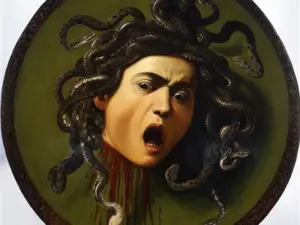Audrey Flack is an American artist who was born on May 30, 1931. Her work, which largely consists of painting and sculpture, has established her as a leader in the fields of pop art and photorealism.

Early Life
Flack was born in New York City in 1931, in the Washington Heights area of northern Manhattan. She went to the High School of Music and Art as a teenager, which was a specialised arts public institution. Her official art education began in 1948, when she enrolled at the Cooper Union in New York. Flack stayed at the school until 1951, when he was lured to Yale by German-American artist Josef Albers (who was then in charge of Yale’s art department).
Flack continued to create her own style while at Yale, influenced by her professors and mentors. Her early work, in particular, exhibited an Abstract Expressionist style similar to that of Albers. Flack earned her bachelor’s degree in fine arts in 1952. She returned to New York the next year to study art history at New York University’s Institute of Fine Arts for a year.
From Abstract to Realism
Flack’s work in the 1950s appeared to be a direct result of her study with abstract expressionists at first. In a self-aware, sarcastic way, she also embraced “kitschiness.” However, she began to believe that the abstract expressionist approach she was employing was failing to achieve what she considered to be a critical goal: connecting with audiences. Flack began going towards realism as a result of his desire to produce art that was more understandable to audiences.

She joined in the Art Students League (ASL), where she studied anatomy under Robert Beverly Hale and began to draw inspiration from painters from earlier periods rather than more contemporary trends. Her work was first classified as part of the “New Realism” trend, but it ultimately changed to photorealism, in which an artist strives to recreate a photograph as faithfully as possible in a new media.
Flack was one of the first ASL students to embrace photorealism and utilise images as inspiration for her art. In many respects, photorealism is a sister genre to pop art, showing everyday objects, typically as still-lifes that try to mimic the realism of photography as precisely as possible. Flack became the first photorealist painter to have work in the Museum of Modern Art’s collection in 1966.
Flacks Fame
Flack’s art occasionally strayed from traditional still life paintings and represented historical events. One of her most well-known paintings is Kennedy Motorcade, November 22, 1963, which depicts a scene from President John F. Kennedy’s assassination. Her historical paintings, particularly her Vanitas paintings, frequently included socio-political criticism. Her still life paintings frequently included commentary on gender roles and constructions; for example, her paintings of female-coded objects like cosmetics and perfume bottles frequently included some criticism on gender roles and conceptions.

Flack created a new method for her paintings in the early 1970s. Instead than just utilising a photograph as a reference, she projected it as a slide onto the canvas, then created the layers of paint using an airbrushing method. Flack also painted her Vanitas series in the 1970s, which included anything from jewellery to images from WWII concentration camps.
However, by the 1980s, Flack had shifted from painting to sculpture as her major medium. In contrast to her extensive academic training in painting, she is totally self-taught in sculpting. Other notable contrasts exist between her sculptural works and her paintings. Her sculptures, for example, tend to represent religious and mythical topics, but her paintings focus on everyday things or historical situations. Women are represented in her sculptures for the most part, expressing idealised yet flawed and various variants on the feminine form and femininity.
Recently
Flack has returned to her origins in recent years. She returned to Baroque influences after finding the photorealist trend to be too “restrictive.” In 1986, she published a book that included her ideas on painting and being an artist. Flack has also spoken and taught both in the United States and overseas. She is now a visiting professor at the University of Pennsylvania and an honorary professor at George Washington University. She is located in New York and divides her time between Manhattan and Long Island.
Information Citations
En.wikipedia.org, https://en.wikipedia.org/.
Recommend0 recommendationsPublished in Artists






Responses